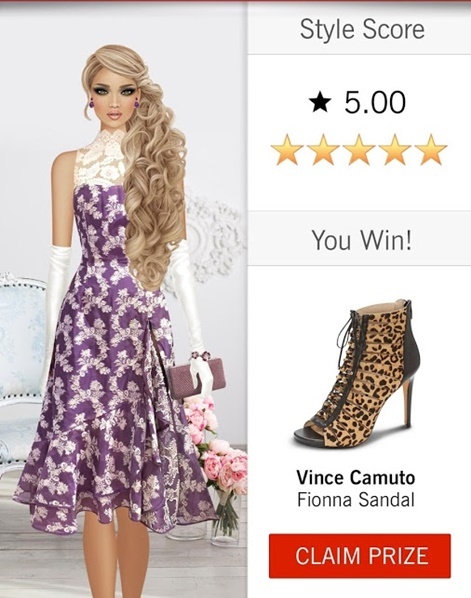Haydon Young is Director of User Acquisition at Dots.
When it comes to mobile games and apps, we generally rely on the data we collect about our users and how they act and interact inside our apps to guide us in optimising and maximising our mobile ad campaigns and creatives.
But it’s *not* just about amassing Big Data, although data is certainly at the heart of effective user acquisition. It’s about creating a Big Picture view of your users by blending what you know about them in the digital world of mobile and apps with what you observe about them in the “real world”.
My career, which started in real estate, taught me the importance of careful observation - watching the gestures, listening to the intonation and piecing together the clues to determine client intent and “need state”.
Focusing on the “signals” in our conversations and interactions allowed me to tailor my response to each individual client – showing how well I understood them and proving how much I cared.
Fast-forward, and the same approach that helped me clinch major property deals provides the foundation for an incredibly successful UA strategy and results that earned me the title “Mobile Hero.”
During my time at CrowdStar, a maker of mobile and social gaming apps for women, I managed a multi-million dollar UA budget for a string of apps including Covet Fashion – an aspirational app for fashionistas and the shopping obsessed.
Our engagement metrics – a female-only audience that spends between 30 and 60 minutes a day in our apps – were off the charts thanks to campaigns that tapped emotions and triggered actions.
What’s more, our campaigns and videos consistently performed much higher than our benchmarks across our app category. Even across different ad networks and ad partners our mobile video ads consistently topped the charts, achieving CTRs and CVRs that were 10% to 25%+ higher than our competitors. This gave us an important edge.
We saw that network algorithms - no doubt due to our high performance and high relevancy among the target demographic - ended up picking our ad to be shown (even if we bid lower) over those of our competitors.
As a result, we were able to achieve lower overall CPIs and higher ROI for our campaigns. Drawing from this eye-opening experience I have identified simple steps you can follow to influence your users and achieve high performance for your game.
Move “beyond segmentation”
Demographic data (age, gender, household) allows you to segment your audience with a high degree of accuracy. It’s fine for understanding “who” your audience is - but it’s also the same data your competitors use to target their audiences. In other words, it’s not going to be the source of your competitive edge.
Our engagement metrics were off the charts thanks to campaigns that tapped emotions and triggered actions.
To move the needle on your campaigns, you need to go deeper and seek to understand “why” users interact with your app. This is where psychographics comes in, allowing you to group users according to their attitudes, aspirations and other psychological criteria.
Whether you’re a fan of Maslow’s Hierarchy of Needs, which identifies five vital human needs that move people to action, or believe the paradigm needs a revamp, framing your app marketing efforts through the lens of psychology is a good starting point.
What does your game *really* mean to the user? What aspiration does it allow them to fulfill? What emotion or desire does it satisfy? Ask tough questions and map your answers to what you know about your audience.
So now that we understand what psychographics are, let’s explore ways you can go about acquiring them.
Combine your data
Demographics will give you dry facts; psychographics will give you user insights. Combining the two in order to target your audience and trigger their actions.
If you’re on top of your UA, and your user data, you already know who your target audience is. In the case of Covet Fashion we knew that “mums” made up a significant share of our users, and we also knew that a large portion of that demographic was in the “30-something” rage.
Framing our audience demographics through the lens of psychology allowed us to brainstorm about their deepest desires (to belong, to be respected, to feel important, to stand out, to be regarded as special).
It also allowed us to improve on how our app delivered on that promise (presenting a whole new genre of fashion entertainment and allowing users to style their head-to-toe looks with actual brands - including Calvin Klein, Michael Kors, French Connection and more).

Take a walk in their shoes
During these sessions we relied on two major methods to help us make the connection in the data and with our users.
One, we conducted in-person interviews with focus groups made up of our top players, and we conducted in-app surveys to study how users interacted with our app. This gave us insight into what our players liked and disliked about the experience.
Two, we studied and observed *real* people in their real surroundings – family, friends and shoppers that frequented Burlingame Avenue, the San Francisco district close to our head office known for trendy, upscale fashion boutiques.
We ended up removing the faces from the creatives, and we watched as click-through and conversion rates skyrocketed.
As part of this research we took a walk in our users’ shoes, strolling through shops and malls to note how fashion and beauty items were displayed and sold - integrating these patterns, trends and observations into our own digital advertising.
It was during one of our field trips that I noticed a small detail that would make an incredibly huge difference in our campaign conversion rate. Many of the mannequins in the shop windows were faceless. Something clicked.
Our app audience is an also an audience of moms, daughters, sisters, aunts, grandmothers and everything in-between - a vast and diverse group of races and body types united by the singular desire to be a part of the fashion and beauty world.
Why not make this possible by removing the faces from the models in our campaign creatives? Wouldn’t this allow our audience to picture themselves in the clothes and looks they wanted?
Instead of reinforcing a feeling that they didn’t fit a specific look or were unable to be a “super-model”, our campaigns would show them what is possible and help them unlock their real beauty.
Challenge the norm
At first, my idea to strip the creatives of the gorgeous faces shocked my mostly female team. After all, I was not only the “new guy” managing UA; I was the guy pitching a radical new idea.
We ended up removing the faces from the creatives, and we watched as click-through and conversion rates skyrocketed. Improvement points were in the 10% to 20% range.
The success of our faceless concept gave us the confidence to roll out similar creatives across multiple campaigns. Our deeper understanding of audience psychographics allowed us to identify new approaches – all aimed at making our audience feel complete and moving them to action.
It’s all about balancing mobile data analysis with a deep understanding of user psychology to identify the triggers, nudges and levers you can activate to motivate your users to engage with your app – and keep them coming back for more.






















